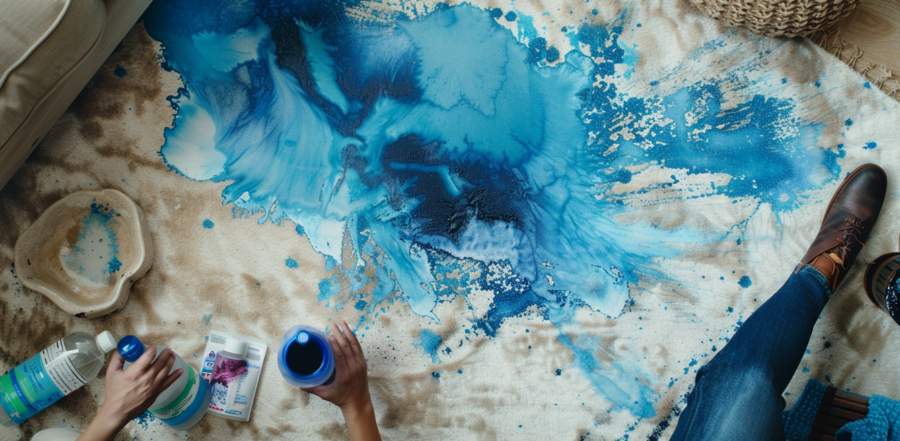DIY carpet dyeing kits promise transformation on a budget—but they rarely mention the part where you call a professional to un-ruin your floor. There’s a reason seasoned carpet dyers exist, and it’s not because they enjoy explaining color wheel theory to panicked landlords on a Tuesday morning.
This is a blunt breakdown of what really goes wrong when people go rogue with dye kits, and why pros charge what they do (hint: it’s not just for the dye).
The Problem with Playing Chemist on Your Carpet
You might think mixing dye is like making a cocktail. It’s not. Dye is chemistry, not vibes. Professionals use pH balancing agents, fixatives, heat control, and fiber-specific formulas. DIY kits, on the other hand, typically come with a vague set of instructions, a one-size-fits-none dye packet, and a strong suggestion to “test a small area first”—which, in reality, just ruins a small area before you ruin the whole thing.Here’s what can (and often does) go wrong:
- Uneven coloration due to inconsistent application or absorption.
- Permanent blotching from over-saturating certain spots.
- Stains reappearing after dyeing because they weren’t properly neutralized first.
- Wrong dye type interacting with synthetic fibers, resulting in color that won’t set—or worse, turns weirdly green.
Why It’s Not About the Dye (And Never Was)
A lot of people assume pros charge more because they have better dye. Not exactly. It’s the process that matters. You could hand a master carpenter a cheap hammer and he’d still outperform you with the deluxe toolkit. Same principle here.Professionals aren’t just dyeing carpets. They’re:
- Assessing fiber types under various light conditions.
- Testing colorfastness and wear patterns.
- Pre-treating the carpet for contaminants that will interfere with dye adhesion.
- Using equipment that distributes color evenly—not just a spray bottle from the dollar store.
When “Close Enough” Isn’t Even Close
Here’s where things get dark—literally. Carpet dyeing isn’t paint. You can’t cover mistakes with more product. Dyes bond at a molecular level. If you overshoot the color, you can’t lighten it. If you create blotches, they become permanent patterns. If you think you can “just go darker,” congratulations, you now own a room that looks like it was carpeted with damp charcoal.And unlike painting a wall, you can’t tape off the edges. You’re working on absorbent fibers, not drywall. Bleed-through is real. One wrong squirt and your baseboards get a makeover too.
The Equipment You Didn’t Know You Needed
Let’s talk tools. That $40 kit from the internet isn’t exactly packing industrial-grade sprayers or heated wands calibrated for fiber temperature. Professionals roll in with gear that looks like it belongs in a crime scene cleanup — because precision dyeing is just that unforgiving.There’s a huge difference between “applying color” and setting it properly. Heat setting, pH balancing, and dye saturation are all controlled through specialized equipment most DIYers don’t even know exists. This isn’t about gatekeeping. It’s about physics. You can’t replicate a 180°F heat-set sprayer with a hairdryer and optimism.
Also, pros wear protective gear because carpet dyeing chemicals can be respiratory irritants. If your plan was “just crack a window,” don’t be surprised when your nostrils rebel halfway through the job.
Time, Mess, and the Myth of Saving Money
Let’s kill the budget myth while we’re here. You might think you’re saving money doing it yourself, but factor in:- Replacement cost when it all goes sideways.
- Time spent researching, prepping, cleaning, and recovering emotionally.
- Supplies you’ll buy and never use again (that sprayer, that drop cloth, the cleaning agent, the gloves you forgot to wear).
Hue’s Gonna Clean Up This Mess?
If you’ve already gone rogue and are reading this while staring at your now-marbled living room floor, all is not lost. Some professionals specialize in salvaging botched dye jobs, though fair warning: it’s usually more expensive to fix a failed DIY attempt than it would’ve been to just hire someone in the first place.You don’t need to be an expert in carpet chemistry. You just need to respect that it is a real field with real consequences when done badly. What looks like an easy win on a tutorial video rarely captures the lighting issues, dye absorption anomalies, or carpet pile inconsistencies that turn a 10-minute project into a 3-day crisis.
If you’re curious about how pros do it or want a specific color transformation, call one. Ask questions. Learn what’s involved. Just maybe don’t reach for the dye kit first unless your goal is abstract expressionism via nylon.
Article kindly provided by dyegenie.com


